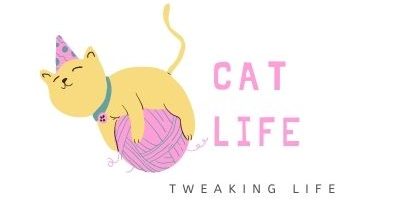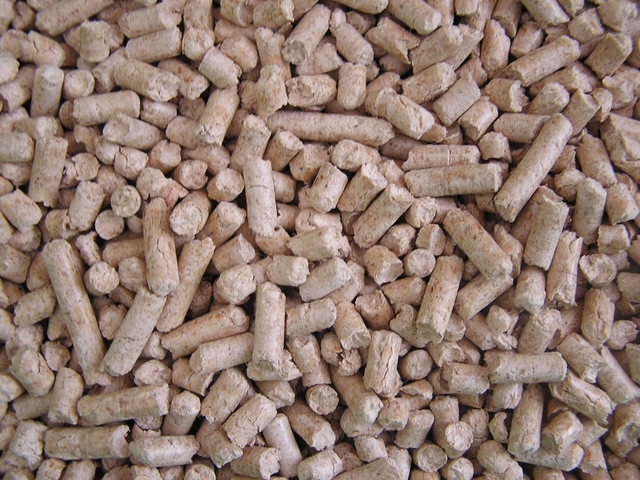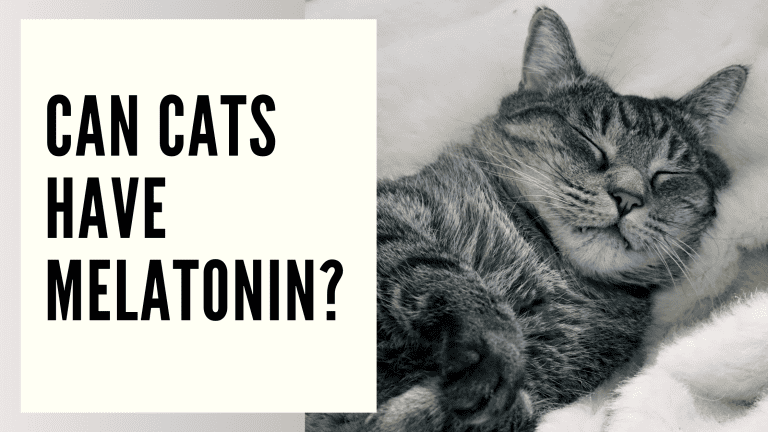Can you mix cat litter? All your questions answered
Mixing cat litter can be a tricky subject. You may have heard the rumors that you shouldn’t mix clumping and non-clumping litter, but is this really true?
Can you mix cat litter to make one big bag for your pet? What about mixing two different brands or types of non-clumping cat litter?
This article will discuss reasons why you should and should not mix clumping and non-clumping cat litter. We will also explore the pros and cons of doing each one separately as well as together.
Can you mix cat litter?
Litter mixing is a common practice when the litter in your home becomes stale or if you have multiple cats. The question is can you mix cat litter?
The answer to this question is no, cat litter should not be mixed. Mixing two different types of cat litter can lead to a number of problems such as the clumping process failing and the product smelling worse than before.

A major concern for cat owners is what kind of litter they should use. The main criteria are the ease with which it can be cleaned, how well it masks smells, and how expensive it is. Cat owners also need to consider the risk that their cat will develop health problems because of exposure to the litter.
However, I don’t recommend litter mixing.
Can it be done? Sure, but your pet might not like the change in texture and will do everything they can to avoid using their box.
There are times when you might need to mix cat litter for emergency reasons or if your cats have sensitive paws. But it is best to avoid mixing at all costs.
Which litter mixes best – affinity / no side effects:
The general rule is not to mix cat litter. Different types of litter offer different benefits and each cat has its own preferences. If you decide to mix litter, make sure to remove the clumping litter from the other litter before you use it. This is because clumping litter will create a big mess in your box.
If you end up combining clumping litter, you should use the same brand. Using different brands has the risk of creating a clumpy mess that your cat will be sure to avoid.
However, it is best to avoid mixing clumping and non-clumping.
Here is a video explaining some common litters and how best they can be mixed.
Can you mix Clumping litter and crystal litter?
No, you should not mix crystal litter and clumping litter.
Clumping litter works by grouping whenever the particles come into contact with moisture from the cat’ waste. The outcome is something like a ball that can be scooped when cleaning the little box.
On the other hand, crystal litter does not form a clump when a cat uses the litter box. Instead, the crystals lock in odor and absorb the moisture.
When you mix the two different types of litter, it makes it difficult for the clumping litter to clump effectively. This may lead to a litter box problem with kitty and they may start misbehaving. They might start scratching the walls of the litter box or not going to their litter box anymore.

Can you mix non-clumping litter and crystal litter?
You should not mix crystal litter with non-clumping litter.
Despite both litters lacking the capability to clump, it is not advisable to mix them.
The two litters are made up of different ingredients that may be lethal when mixed.
Can you mix two clumping litters?
Although I don’t recommend it, mixing two different types of clumping litter together can work out. The key is to mix litters from the same brand as they tend to have some simmilarity.
Additionally, clumping litters from different brands have different clumping abilities. Mixing one with a higher absorbent rate with a lower quality one may affect the clumping ability.
However, if you’re planning on switching brands, you can check on litters that have almost the same particle size.
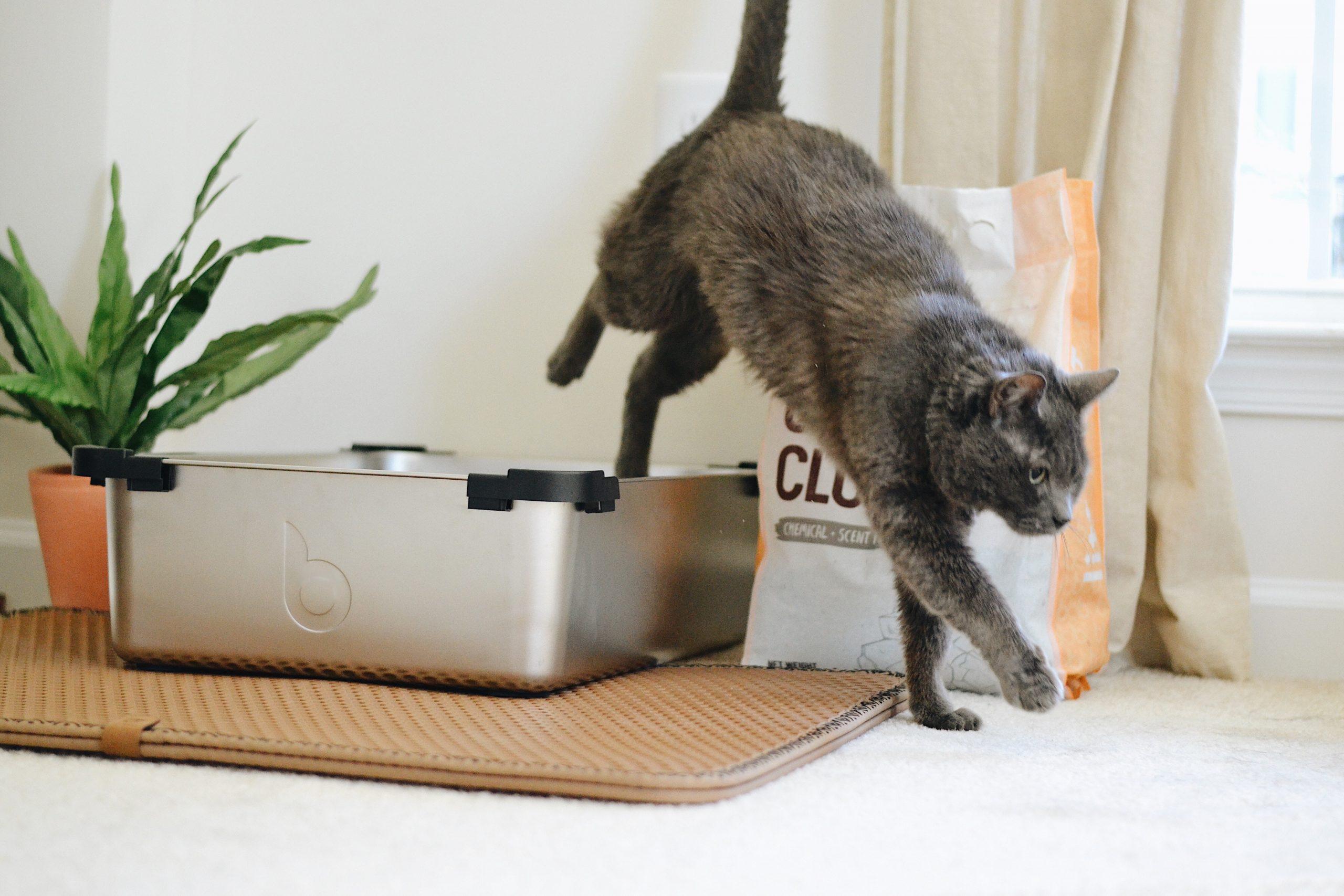 Photo by Litter Robot on Unsplash
Photo by Litter Robot on Unsplash
Can you mix two non-clumping litters?
Mixing two different brands or types of non-clumping cat litter is okay. Mixing the two especially if they are from the same brand will most likely not cause an issue.
However, mixing two types of non-clumping litter from different brands may pause a potential problem.
Remember, this litter works by absorbing the water and masking smell. There is no possible way to scoop where kitty has urinated since it doesn’t clump.
If you mix two brands with different absorption rates,then one ma influence the effectiveness of the other to mask up litter box smells.
Furthermore, you don’t know how your pet will respond.
Why you can consider mixing:
Many people ask “Can I mix cat litter?” The answer to this question is not always straightforward. While it can be done, there are some pros and cons involved with mixed cat litter.
Benefits of mixing cat litter:
● Save Money
With the pandemic and everything that has been going on, it is understandable when you want to save cash. Heck, we all do or at least I know I want to save my bucks.
However, this should not be the only reason you are considering mixing cat litter. Start by adding small portions of the cheaper brand with the one kitty loves.
This would be a great idea in phasing out and eventually using the cheaper brand.
Additionally, when using clumping litter, you may find that it is expensive to maintain the needed depth. To deal with this, you can add other cheaper clumping litters to the base of the litter box.
Cheaper filler alternatives that can be used include shredded coconut husks, paper litter or word litter, whichever is easily accessible.

● Keep them from Boredom
Sometimes we love spicing things up in our lives. It is understandable if you’d like to switch things up in the litter box area.
However, this should not be done often. Even though it is pleasurable for some of us to remain spontaneous, cats find this stressful. They may end up misbehaving and avoid the litter box altogether!
● It can be a good way to get rid of smells
Clumping litter tends to suck up liquids from the cat’s excretions leaving behind a smelly residue. A simple way of controlling the smell would be to mix your litter with one that has a nice fragrance.
However, be warned, cats love familiarity and may take time to adjust. The best way to introduce scented cat litter would be to slowly integrate and mix it with their normal litter.
If masking smells is the only reason for mixing litter, then it is best if you use a highly absorbent cat litter. The higher the clumping ability and absorption rate the better it will mask smells from the litter box.
Alternatively, you can use crystal litter to get rid of the smell. The crystals work by absorbing moisture and locking in the smell keeping the litter box odorless.
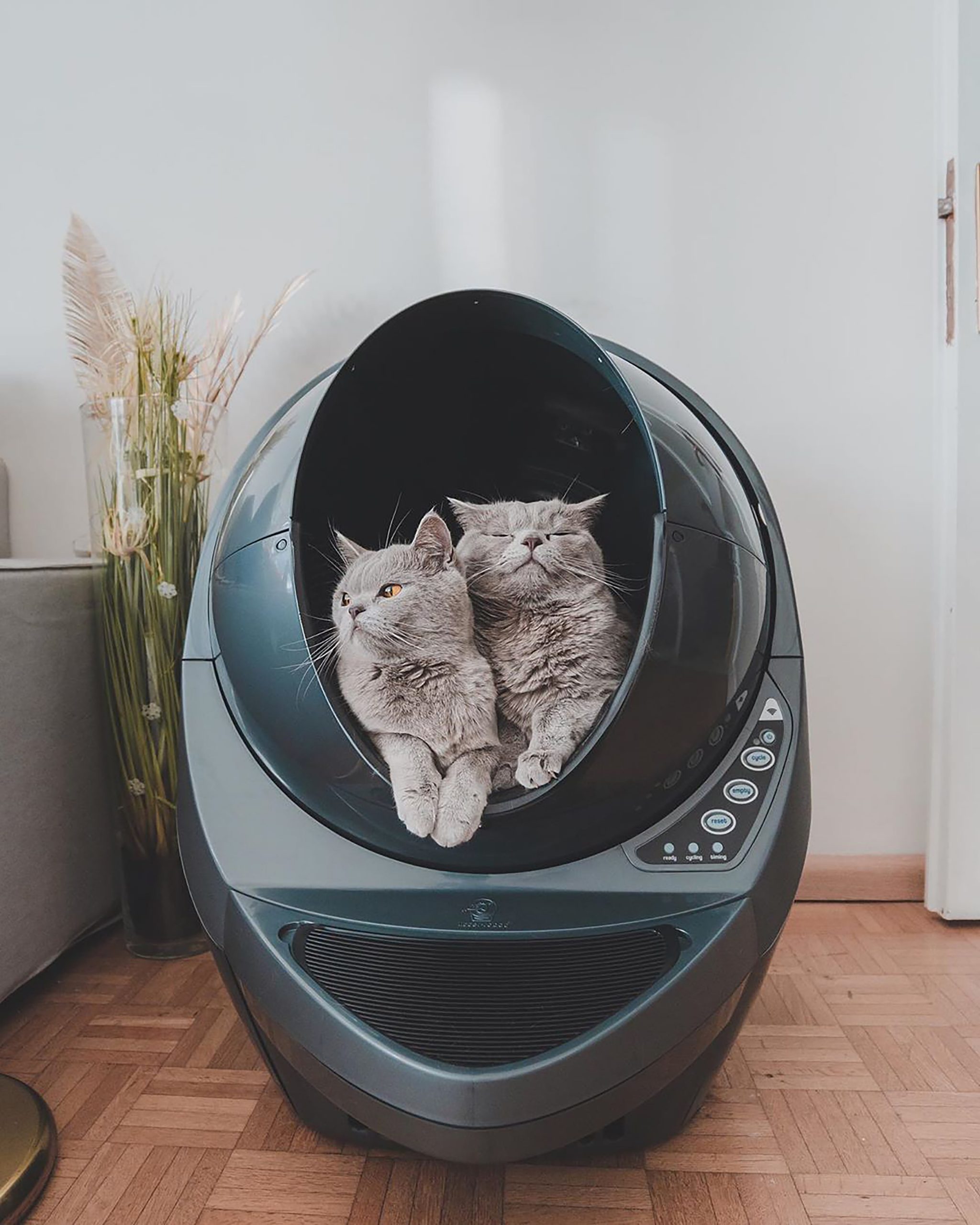 Photo by Litter Robot on Unsplash
Photo by Litter Robot on Unsplash
Why you should not mix cat litter:
A common misconception is that you can mix different types of cat litter together. This is not the case and can actually cause a lot of problems.
Keep in mind that it isn’t just about one type of litter clumping better than another. It also has to do with the scents and particle size, among other things.
As you may already know, cat litter is not cheap. It can cost anywhere between $1 to $4 per pound. But if you are thinking of saving money by mixing your old cat litter with the new one, you should consider the potential problems this might cause.
Disadvantages of mixed cat litter:
● Your fur baby may start pooping and peeing outside the litter box.
Although change is inevitable, cats sure do hate any difference in their usual routine. You shouldn’t mix two different brands or types of non-clumping litters because your pet might avoid using their box. It should only be done if necessary.
Cats notice even slight changes like texture and smell.
● Mixing cat litter can cause fumes to develop, which can be harmful to your health.
First of all, it is best to avoid using clay-based litters with silica crystals. This is because the crystals will react badly with the other kind of litter and create a hazardous gas that is harmful to both humans and pets alike.
It is best to avoid the risk of inhaling this toxic mixture and always buy one litter type per box of litter.
● Not eco-friendly.
The excretions will mix with the materials in the litter box. When you use these mixed litters, you are likely to have an unpleasant odor coming from your house.
Cats are clean animals and they might avoid using the litter box. Cats, just like humans, love their washrooms clean.
One of the first cat care lessons my mum taught me as a kid is to always clean our cat’s litterbox. Nobody wants to use a dirty toilet and nobody loves the smell of excretions.
● Can be harmful to the cat’s health
Mixing clumping and non-clumping litter may compromise the quality of your cat’s environment. This is because non-clumping litter will crack down and clump together if it becomes wet. It will also stick to your cat’s paws.
Forcing the cats to constantly reuse their own urine and feces creates a risk for infections in cats.
● Litter boxes are not easy to clean when used with mixed cat litter.
Mixing clumping and non-clumping cat litter creates a sticky, clay-like substance that is hard to scoop up.
This can lead to a disaster if you mix these types of litter together because they are incompatible with one another.
The clumping litter will suck up all the liquid and leave behind a smelly mess. The non-clumping litter will be left to absorb it and create a much larger mess.
This forces the non-clumping litter to break apart when the clumping litter’s odor starts to become more powerful than the odor from the other type of litter.
● One of the most common of these is that the clumping ability of the litter will be reduced by 50%.
Normally, clumping litter loses its clumping ability after use. Frequent usage leads to excessive moisture in the litter making it hard to clump.
Now imagine mixing clumping and non-clumping litter! Disastrous is the word.
On one hand, particles from the clumping litter are trying to group. On the other hand, the non-clumping litter isn’t able to form a bunch. The non-clumping comes in the way of the clumping litter and prevents it from working how it is supposed to work. This may reduce the clumping litter’s ability to clamp up to 50%.
Ratio to Mix Cat Litter:
When combining cat litter, you should mix in the ratio of one part old to one part new
Mixing litters should only be done if it’s necessary.
How do I know which litter is safe to use?
The main criteria of selection are the ease with which it can be cleaned, how well it masks smells, and how expensive it is. Cat owners also need to consider the risk that their cat will develop health problems because of exposure to the litter.
Although it is not a ‘one shoe fits all’ kind of situation, getting the best litter isn’t rocket science. You can test out a variety of cat litter to determine which works best for you and your fur baby.
Here is a video review of 13 different cat litters to guide you.
This article also discusses some critical cat litter safety concerns.
Conclusion on mixing cat litter
The general rule is not to mix cat litter. Different types of litter offer different benefits and each cat has its own preferences.
If you do mix litter, make sure to remove the clumping litter from the other litter before you use it because clumping litter will create a big mess in your box.
